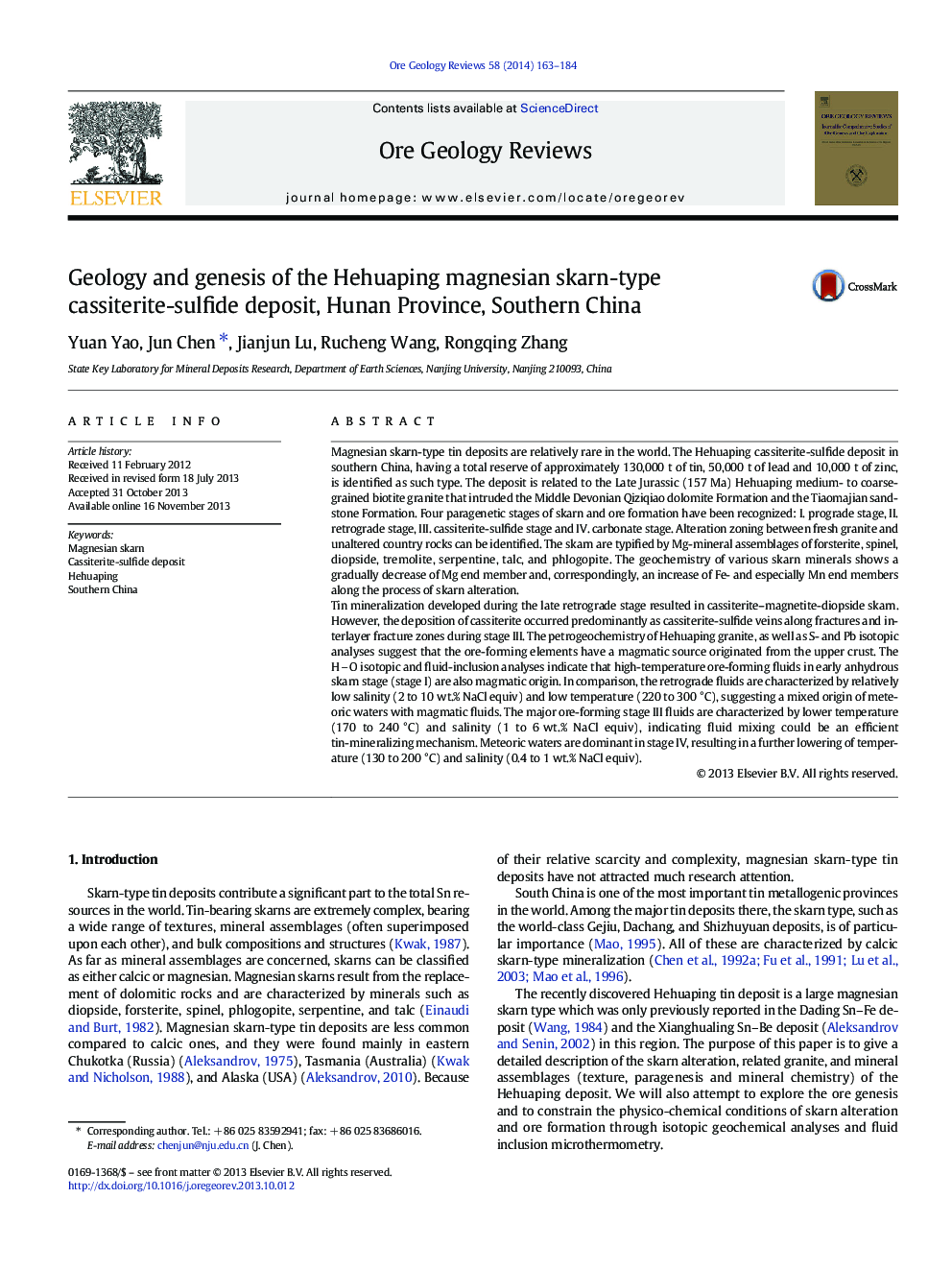| کد مقاله | کد نشریه | سال انتشار | مقاله انگلیسی | نسخه تمام متن |
|---|---|---|---|---|
| 6435921 | 1637245 | 2014 | 22 صفحه PDF | دانلود رایگان |
- The causative intrusion of Hehuaping deposit is the Hehuaping A-type biotite granite.
- The Hehuaping is a magnesian skarn-type cassiterite-sulfide deposit.
- There is a decreasing trend of Mg but increasing for Fe and Mn in skarn minerals.
Magnesian skarn-type tin deposits are relatively rare in the world. The Hehuaping cassiterite-sulfide deposit in southern China, having a total reserve of approximately 130,000 t of tin, 50,000 t of lead and 10,000 t of zinc, is identified as such type. The deposit is related to the Late Jurassic (157 Ma) Hehuaping medium- to coarse-grained biotite granite that intruded the Middle Devonian Qiziqiao dolomite Formation and the Tiaomajian sandstone Formation. Four paragenetic stages of skarn and ore formation have been recognized: I. prograde stage, II. retrograde stage, III. cassiterite-sulfide stage and IV. carbonate stage. Alteration zoning between fresh granite and unaltered country rocks can be identified. The skarn are typified by Mg-mineral assemblages of forsterite, spinel, diopside, tremolite, serpentine, talc, and phlogopite. The geochemistry of various skarn minerals shows a gradually decrease of Mg end member and, correspondingly, an increase of Fe- and especially Mn end members along the process of skarn alteration.Tin mineralization developed during the late retrograde stage resulted in cassiterite-magnetite-diopside skarn. However, the deposition of cassiterite occurred predominantly as cassiterite-sulfide veins along fractures and interlayer fracture zones during stage III. The petrogeochemistry of Hehuaping granite, as well as S- and Pb isotopic analyses suggest that the ore-forming elements have a magmatic source originated from the upper crust. The HO isotopic and fluid-inclusion analyses indicate that high-temperature ore-forming fluids in early anhydrous skarn stage (stage I) are also magmatic origin. In comparison, the retrograde fluids are characterized by relatively low salinity (2 to 10 wt.% NaCl equiv) and low temperature (220 to 300 °C), suggesting a mixed origin of meteoric waters with magmatic fluids. The major ore-forming stage III fluids are characterized by lower temperature (170 to 240 °C) and salinity (1 to 6 wt.% NaCl equiv), indicating fluid mixing could be an efficient tin-mineralizing mechanism. Meteoric waters are dominant in stage IV, resulting in a further lowering of temperature (130 to 200 °C) and salinity (0.4 to 1 wt.% NaCl equiv).
Journal: Ore Geology Reviews - Volume 58, April 2014, Pages 163-184
